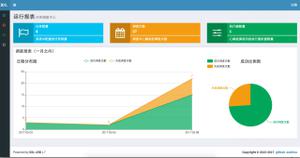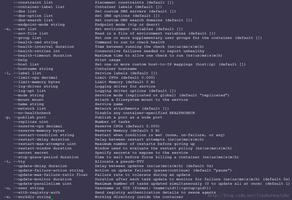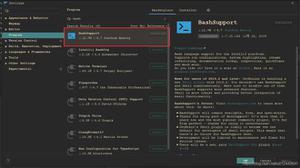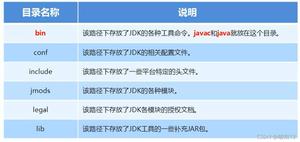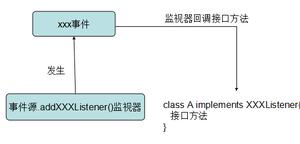java多线程之Executor 与 ExecutorService两个基本接口

一、Executor 接口简介
Executor接口是Executor框架的一个最基本的接口,Executor框架的大部分类都直接或间接地实现了此接口。
只有一个方法
void execute(Runnable command): 在未来某个时间执行给定的命令。该命令可能在新的线程、已入池的线程或者正调用的线程中执行,这由 Executor 实现决定。
public interface Executor { /**
* Executes the given command at some time in the future. The command
* may execute in a new thread, in a pooled thread, or in the calling
* thread, at the discretion of the {@code Executor} implementation.
*
* @param command the runnable task
* @throws RejectedExecutionException if this task cannot be
* accepted for execution
* @throws NullPointerException if command is null
*/
void execute(Runnable command);
}
Executor的几种实现原理介绍:
1、 Executor 接口并没有严格地要求执行是异步的。在最简单的情况下,执行程序可以在调用者的线程中立即运行已提交的任务:
class DirectExecutor implements Executor { public void execute(Runnable r) {
r.run();
}
}
2、 更常见的是,任务是在某个不是调用者线程的线程中执行的。以下执行程序将为每个任务生成一个新线程。
class ThreadPerTaskExecutor implements Executor { public void execute(Runnable r) {
new Thread(r).start();
}
}
3、 许多 Executor 实现都对调度任务的方式和时间强加了某种限制。以下执行程序使任务提交与第二个执行程序保持连续,这说明了一个复合执行程序。
class SerialExecutor implements Executor { private final Queue<Runnable> tasks = new ArrayDeque<Runnable>();
private final Executor executor;
Runnable active;
SerialExecutor(Executor executor) {
this.executor = executor;
}
public synchronized void execute(final Runnable r) {
tasks.offer(new Runnable() {
public void run() {
try {
r.run();
} finally {
scheduleNext();
}
}
});
if (active == null) {
scheduleNext();
}
}
protected synchronized void scheduleNext() {
if ((active = tasks.poll()) != null) {
executor.execute(active);
}
}
}
二、ExecutorService 接口简介
ExecutorService 是一个接口,提供了管理终止的方法,以及可为跟踪一个或多个异步任务执行状况而生成Future 的方法。
ExecutorService 的实现:
- 三个实现类:
AbstractExecutorService(默认实现类) ,ScheduledThreadPoolExecutor,ThreadPoolExecutor Executors提供了此接口的几种常用实现的工厂方法。
1. 从Executor 接口中继承了不跟踪异步线程,没有返回的 execute 方法:
void execute(Runnable command);
2.扩展的跟踪异步线程、返回Future 接口的实现类的方法:
public interface ExecutorService extends Executor { //启动一次顺序关闭,执行以前提交的任务,但不接受新任务。如果已经关闭,则调用没有其他作用。
void shutdown();
//试图停止所有正在执行的活动任务,暂停处理正在等待的任务,并返回等待执行的任务列表。 无法保证能够停止正在处理的活动执行任务,但是会尽力尝试。例如,在 ThreadPoolExecutor 中,通过 Thread.interrupt() 来取消典型的实现,所以如果任务无法响应中断,则永远无法终止。
List<Runnable> shutdownNow();
//如果此执行程序已关闭,则返回 true。
boolean isShutdown();
//如果关闭后所有任务都已完成,则返回 true。注意,除非首先调用 shutdown 或 shutdownNow,否则 isTerminated 永不为 true。
boolean isTerminated();
//一直等待,直到所有任务完成。请求关闭、发生超时或者当前线程中断,无论哪一个首先发生之后,都将导致阻塞,直到所有任务完成执行,或者超时时间的到来如果此执行程序终止,则返回 true;如果终止前超时期满,则返回 false
boolean awaitTermination(long timeout, TimeUnit unit)
throws InterruptedException;
//提交一个返回值的任务用于执行,返回一个表示任务的未决结果的 Future。该 Future 的 get 方法在成功完成时将会返回该任务的结果。如果想立即阻塞任务的等待,则可以使用 result = exec.submit(aCallable).get(); 形式的构造
<T> Future<T> submit(Callable<T> task);
//提交一个 Runnable 任务用于执行,并返回一个表示该任务的 Future。该 Future 的 get 方法在成功完成时将会返回给定的结果。
<T> Future<T> submit(Runnable task, T result);
//提交一个 Runnable 任务用于执行,并返回一个表示该任务的 Future。该 Future 的 get 方法在成功 完成时将会返回 null。
Future<?> submit(Runnable task);
//执行给定的任务,当所有任务完成时,返回保持任务状态和结果的 Future 列表。返回列表的所有元素的 Future.isDone() 为 true。注意,可以正常地或通过抛出异常来终止已完成 任务。如果正在进行此操作时修改了给定的 collection,则此方法的结果是不确定的。
<T> List<Future<T>> invokeAll(Collection<? extends Callable<T>> tasks)
throws InterruptedException;
//超时等待,同上。
<T> List<Future<T>> invokeAll(Collection<? extends Callable<T>> tasks,
long timeout, TimeUnit unit)
throws InterruptedException;
//与 invokeAll的区别是,任务列表里只要有一个任务完成了,就立即返回。而且一旦正常或异常返回后,则取消尚未完成的任务。
<T> T invokeAny(Collection<? extends Callable<T>> tasks)
throws InterruptedException, ExecutionException;
//超时等待,同上。
<T> T invokeAny(Collection<? extends Callable<T>> tasks,
long timeout, TimeUnit unit)
throws InterruptedException, ExecutionException, TimeoutException;
}
以上是 java多线程之Executor 与 ExecutorService两个基本接口 的全部内容, 来源链接: utcz.com/z/393104.html


